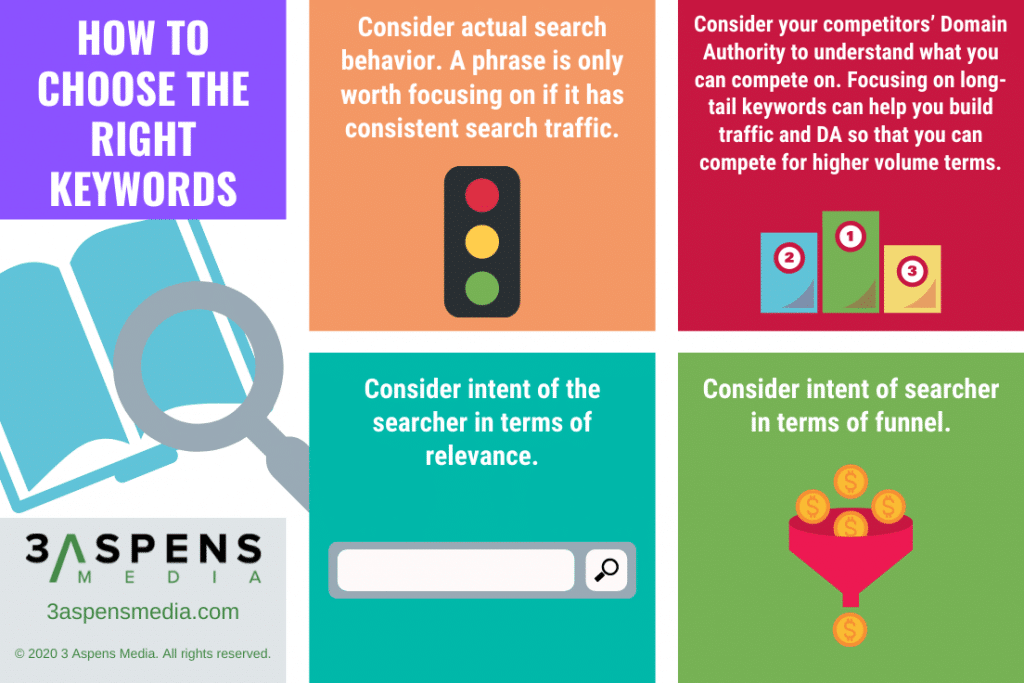Many companies start a website redesign project with design first, and then ask for a writer to fill in the words. But writing effective content for your website requires a solid foundation of SEO and content strategy. Without either, your updated and redesigned website won’t deliver the ROI you were looking for.
Website content is a broad category that includes:
- Marketing pages, such as the homepage, about us and services
- Product pages in an ecommerce store
- Conversion content, such as landing pages for an ebook
- Social proof, such as case studies and testimonials
- Blog content
- Promotional content, including sales promos in PDF
- Graphics and other imagery that convey or support your message
- Videos
Words are not just words. Those words, and how they are organized, are critical to:
- Drawing prospects to your website
- Selling your company as a viable partner to prospects
- Converting prospects into leads – and then to customers
- Selling more to existing customers
- Driving ecommerce sales
- Establishing expertise in your market
- Establishing brand trust
In other words, if you want to achieve your sales and marketing goals, you need good website content. And that website content needs to be planned BEFORE a website redesign begins. Start here:
An Effective Website Redesign Starts with an SEO Audit
An SEO audit, sometimes called a website audit, is an in-depth analysis of the many factors that affect your site’s performance in search on sites like Google or Bing. An audit is critical to uncovering underlying issues that may be keeping you from being found online.
It doesn’t make a lot of sense to write wonderful copy for a beautiful new website – and not have anyone read it. You need to make sure that your website’s search health is in good shape so that if someone is searching for an answer to a problem you solve, your website won’t go unnoticed.
An SEO audit answers questions like these:
Are you missing critical meta tags?
Meta tags include the meta title and the meta description. These are critical to SEO. They are the two items that appear in search results and drive traffic to your site. An SEO audit will return a list of all pages that are missing these must-have items.

Are search engines confused by your website?
If you are redesigning your website, you want to make sure you’re not carrying over any potential issues that might be keeping Google and other search engines from understanding what you’re really about. If you have subdomains or hidden pages that you’d rather Google not crawl, those pages need to be deindexed. It’s also possible Google isn’t crawling, or regularly reviewing, all of the pages you want it to see. Sections of your site might be invisible to search engines. Getting this fixed is critical to improving search performance and increasing the ROI on all the time you’re spending on your website redesign.
How many clicks does it take to get to any single page?
Aim for three or fewer clicks to get to any single page on your website. A website audit can identify opportunities to update the organization of your website before you launch the redesign to ensure it’s easy for a user to get to where they want to go as quickly as possible. Google also likes it this way.
Do you have broken links and pages?
It’s likely you have 404 error codes (pages that no longer exist) or broken links (links that don’t work) throughout your website. The more errors your website returns (and you might be surprised!), the more it will hurt your standing with Google. Thankfully, these are easy to fix once you know they are there.
Does your website run smoothly?
Google and other search engines care if your website runs smoothly. If your website takes too long to load a single page, for example, you will rank lower in search. Visitors will also bounce more quickly, going somewhere else to get their answers. It takes just two seconds of load time to drive away a potential customer.
How do you rank in organic search?
Many companies are surprised when they see how few keywords they actually rank on page one of search results for. And in the end, Page One of Google is the only page that matters – and even then, the top of Page One. Redesigning your website is a great time to evaluate your current state: your traffic from organic search, keywords you’re ranking for, most popular pages on your site and so on – and to improve upon that.
An analysis of keywords is also a good way to identify not only which keywords you should prioritize, but which keywords to stop prioritizing. What you ranked for five years (or even six months) ago may not be relevant today. Search trends change all the time.
An SEO audit is not a one-and-done project: Read more about website audits and the importance of doing them regularly.
Without a Content Strategy for Your Website, You’re Writing Blind
SEO matters. It’s absolutely critical to being found today online. And without it, the copy on your website will see fewer eyes than your business deserves. Fed by SEO, a content strategy will help you organize and prioritize content on your website that will pull in your prospects and customers – and keep them there.
Content strategy is the planning, development, management and distribution of content in the right places such as your website, social media and email to drive sales and marketing goals. Done well, your content will attract and convert new customers and solidify the relationships you have with your existing ones.
That’s the message behind 3 Aspens Media’s tagline: Attract. Engage. Grow. No doubt: You want your website to do all three of those things. In the context of a website redesign, content strategy comprises two components:
Speaking to and solving the pain points of your target audience – in their language.
An SEO audit helps you understand your current position online. Additional keyword research gives you a playbook for developing content that is relevant to the prospects you’re trying to reach; more importantly, it gives you the language they are using in searches as they seek answers to their pressing problems. (It’s not about keyword stuffing – keyword research can give you great insights into how your customers think.)
For example, a machinist might search for “What drill bit should I use for xyz?” But she may also search for the issue that caused her to look in the first place; maybe drill bits continue to break and she’s looking for possible causes. Keyword research forces you to think beyond the obvious as you develop a plan for your website content. Searchers typically focus on pain points, not on the solutions themselves. How can you use this knowledge to structure your website to attract these prospects?
Here are some guidelines for identifying which keywords to focus on when you are redesigning and rewriting your website:

Engaging your prospects and customers once they get to your website.
What plan do you have in place to get new visitors to your website to stay? How will you organize your website to push them farther into the funnel? What resources can you develop to keep them on your website rather than back to Google to continue their research? How can you increase the chances they will click “Add to cart” or fill out a form for a demo?
Content strategy – or the right content for the right audience in the right channels – feeds content marketing tactics, which will drive the conversions you are looking for. But you need a plan. This quote says it all:
“A goal without a plan is just a wish.” – Antoine de Saint-Exupery
Build your website’s content strategy by asking these simple questions:
What are your marketing goals? For many, this includes brand awareness, generating more qualified leads and engaging with existing customers. Try to get as specific as possible, including goals by target industry. That will help you identify the types of content that you can use at each stage of the sales cycle to move a prospect forward.
Who are the decision-makers at your prospect companies? And who are the influencers on the sale? Knowing this will help you answer the next question.
What topics do they care about? This will help you organize the content on your website – not just blog content, but resources and the order of benefits on marketing pages – around what your target audience thinks about most. Segment. Remember that a target prospect in the construction industry will likely care about different things than someone in finance.
And, finally, before you redesign your website, conduct a content audit.
A content audit is basically a list of the content you have on your website. It should be part of your content strategy development. If you have a blog, a content audit will be dominated by blog posts, but a content audit should also include important marketing collateral like case studies, technical guides, application guides, ebooks, data sheets and more.
We usually use a simple spreadsheet to do this, incorporating not only the title and link, but also the category, date and notes around how and if it can be used on the new site. Don’t get rid of content if it’s getting traffic. But consider updating it or combining it with another piece to provide a deeper, more relevant resource to your users (and then set up a redirect to the new piece). Quantity is no longer the goal; focus on quality. Start your newly redesigned website with a clean and easy to consume set of resources for your target audience.
Getting a full picture of what’s already there will help you know what to keep, what you need to add and what you need to update to improve the effectiveness of your website. It will also give you a granular view of whether the content you have on your website meets buyers’ needs at every stage of the funnel, from simple top-of-the-funnel awareness to someone who is ready to buy.
Successful Website Redesigns Are Not Just About Looking Pretty
You may be redesigning your website for any number of reasons. But many times, companies pursue a new design simply because their old design looks dated. There’s nothing wrong with that. But recognize that you’re not investing all that time and money because of how it looks. In reality, your website is not delivering the results you want it to.
An SEO audit and content strategy review will provide you with a solid foundation on which to base your website redesign decisions. That’s the goal. You want your website to perform better than it does now.
Don’t expect that updating the design of the website without first putting thought into SEO and content strategy will get you significantly better results.
You’ll just be putting lipstick on a pig.



